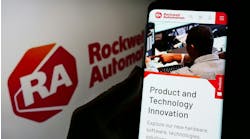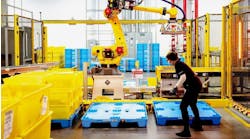In September, Owen Gwynne presents "Adapting IoT Technologies to a Complex Shop Floor" at
the fourth-annual Smart Industry Conference. Today the senior programmer with Teel Plastics previews his presentation and shares his perspective on artificial intelligence, retrofitting equipment for the IoT, and the start small approach. Take a look…
Smart Industry: How are you using artificial intelligence with your production lines?
Owen: AI is a very broad term. We are currently not using sophisticated machine-learning systems or neural networks; we are working toward a simple, rule-based system to help control limited aspects of production. We hope to move up the complexity chain as time moves on, but for now we are starting small and working to understand our own systems better before we will be able to tell a machine what to do. We feel the start small approach is best for us because it gives us the opportunity to master unseen issues before we commit to a major implementation. In addition, because we have a continuous process, we need to have very fast turnaround. So we are working to determine what systems we can/should put at the edge and what we can move to a cloud space.
Smart Industry: What makes a shop floor complex? How does this complicate the application of digital technologies?
Owen: Our shop floor is complex because everything moves. A basic manufacturing setup is 20 lines, with all the equipment bolted to the floor running the same product 24/7. We have constructed lines that sometimes changed every few hours. Every piece of equipment can be moved from one line to another. The complexity comes from the need to model this system correctly and then being able to be highly fault-tolerant. We need a system where we identify what equipment is, then align that with information from that machine, then attach human-entered (not time-accurate) information. We also need to make sure that everything works as well as possible. Because there are unknown and known inaccuracies, we need to build systems that search data sets for issues and that monitor environments for faults and missing information. Then we must inform the right people in the right way with the right information so they can address the issues.
Smart Industry: Why is an incremental process your process in deploying your IoT system?
Owen: We are taking a very incremental approach to IoT for several reasons. First, money; we don’t have the resources to purchase entire pre-built solutions or throw away existing equipment because it does not meet the latest standard. Second, understanding; IoT is too specific to a manufacturing process to adapt very well to general solutions. Therefore we need to fully understand our own process before we will know enough to be able to apply larger solutions. Third, we need wins; deploying a process/system/environment that might take a couple of years before it shows returns is not practical. We need to provide payback to many levels of our organization while driving to the final goal of a closed-loop IoT production system. This means providing things like real-time material-reporting to help material-handling or real-time costs as we move forward.
Smart Industry: Provide an example of an issue/challenge and how you overcame it.
Owen: One of the key challenges is how to control your equipment. We have a wide range of devices that need to be controlled/talked to. There are a number of possible solutions out there, but we opted to work with Kepware. The system they provide gives us nice, low-level communications with devices without having to write a device-specific interface. Kepware also provided an IoT gateway that works as a REST service. All we needed to do was figure out how to properly connect to the REST service and provide it with the correct information. We did this by building a web page that connected to the REST service and to our data sources. We were then able to provide the operators with a screen where they could download to the equipment recipes for the parts they are working on.




